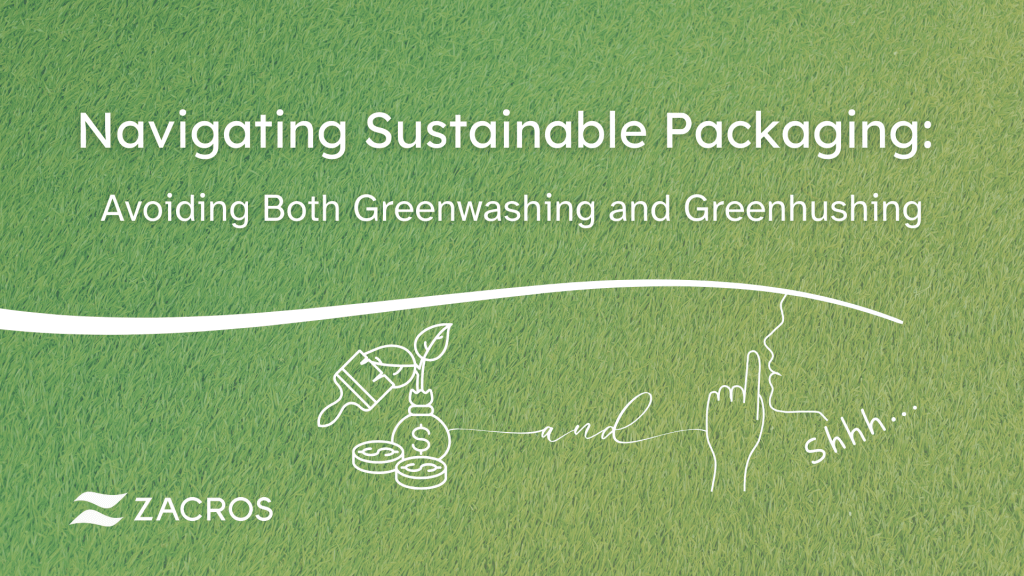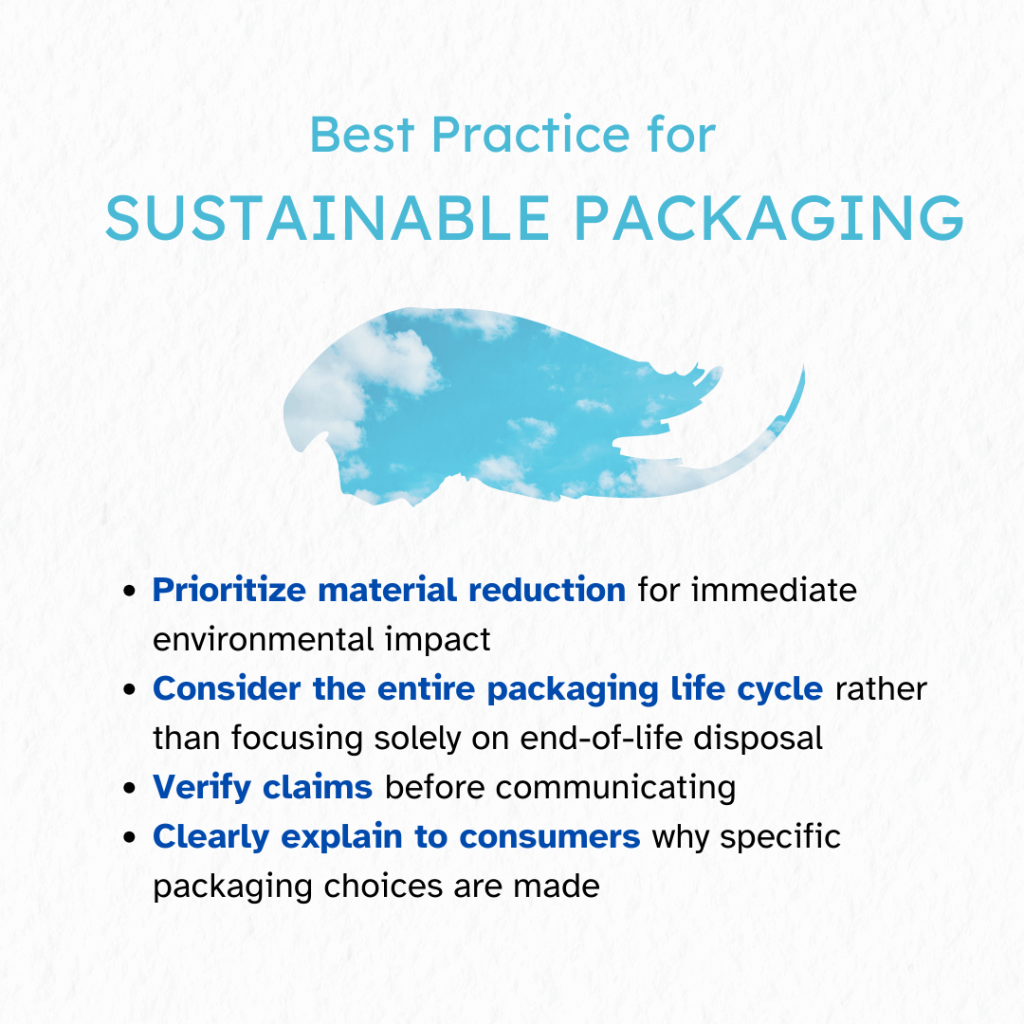In today’s sustainability-conscious market, brands face a tough challenge. They need to honestly share their sustainable packaging efforts without making false claims, known as greenwashing. Meanwhile, the trend of ‘greenhushing’ has emerged, where companies remain silent or downplay their environmental commitments of out of fear of criticism. While this fear is understandable, staying silent is not beneficial. This guide walks you through how to confidently communicate your sustainable packaging strategy, offering practical tips to verify claims, find a balance between overstatement and underreporting, and create transparent messaging that builds consumer trust.

The Greenhushing Challenge of Sustainable Packaging
There is a growing tendency among companies to limit the public disclosure of their environmental initiatives. This trend stems from increasing public scrutiny and the fear of being accused of greenwashing if their sustainable packaging claims don’t meet the consumer expectations. However, not discussing sustainability efforts can be risky since consumers demand openness and honesty from companies.
3 Key Strategies for Sustainable Packaging Communication
Sustainable packaging is complex. There is no one-size-fits-all solution suitable for every product. The following strategies can help brands communicate more effectively:
-
Use Clear and Specific Language
Instead of using vague terms like “eco-friendly,” provide precise, measurable statements.
- “Our new pouches use 60% less plastic than our bottles.”
- “We’ve cut packaging weight by 45%, reducing transport emissions.”
- “Our design saves 3 tons of plastic each year.”
-
Discuss Challenges Openly
Sustainable packaging often involves difficult trade-offs. Transparency about these choices helps build trust.
- “We are working towards fully recyclable packaging but have initially reduced material use by 30%.”
- “Our packaging ensures product safety and shelf life, using fewer resources.”
- “Our first step in our sustainability journey is minimizing material use.”
-
Tailor Packaging to Product Needs
Different products require different packaging solutions. It is essential to emphasize how these choices support both sustainability and functionality.
- “Our protective packaging extend shelf life while using 40% less material.”
- “Refill pouches reduce plastic use while improving product evacuation rates.”
How to Verify Sustainable Packaging Claims
Some suppliers may exaggerate their environmental benefits, leading to unintentional greenwashing. Brands must ensure that sustainable packaging claims are accurate and verifiable. If you are not sure, make sure to ask suppliers for supporting documents for all environmental claims.
- Conduct audits of suppliers or rely on third-party verification.
- Independently test packaging materials if necessary. Suppliers like ZACROS can identify material structures of flexible packaging.
- Understand regional differences in manufacturing standards and environmental laws.
- Be cautious about vague descriptions like “eco-friendly” without real evidence.
Your brand’s reputation is closely linked to the accuracy of your sustainability claims, including those from your supply partners.
Best Practices for Sustainable Packaging

Sustainability is not limited to recyclability. The EPA’s waste management hierarchy prioritizes source reduction and reuse as the most preferred strategies. Consider these best practices:
- Prioritize material reduction for immediate environmental impact, recognizing that the success of recyclable packaging ultimately relies on consumer recycling behavior. Japan is a great successful example of reducing plastic usage by more than 40% for home and personal care products using flexible pouches.
- Consider the entire packaging life cycle rather than focusing solely on end-of-life disposal.
- Verify claims before communicating, working with reputable third parties.
- Clearly explain to consumers why specific packaging choices are made and their real environmental impact.
- Integrate sustainability into the core of your brand story, not as an isolated effort.
Frequently Asked Questions
Q: What is greenhushing in sustainability?
A: Greenhushing is when companies intentionally downplay or withhold their environmental initiatives due to fear of scrutiny, backlash, or accusations of greenwashing.
Q: How can brands avoid greenwashing when talking about packaging?
A: Focus on clear, measurable claims, verify supplier information, and communicate honestly about both successes and challenges.
Q: What is the good sustainable packaging strategy?
A: There is no one-size-fits-all answer. Sustainability depends on the product, materials, life cycle, and company value. However, source reduction and material reuse are generally most effective.
Q: Why is recyclability not always enough?
A: Recyclable packaging only benefits the environment if consumers actually recycle it. That’s why reducing materials and choosing widely accepted materials are often better starting points.
Conclusion
Navigating the complexities of sustainable packaging requires transparency. Consumers want to know about the challenges a company faces, just as much as they want to hear about environmental successes. The best sustainable packaging solutions balance product protection, environmental responsibility, and alignment with brand values. Being upfront about your efforts helps build lasting trust with your customers and steers you clear of both greenwashing and greenhushing.
Are You Ready to Explore Sustainable Packaging for your Products?
ZACROS has provided quality flexible packaging for liquid products for over 25 years. We have an intensive chemical compatibility database to find you with a suitable packaging solution. Contact us today to learn more.